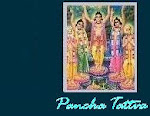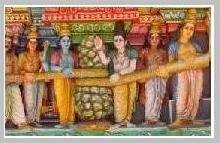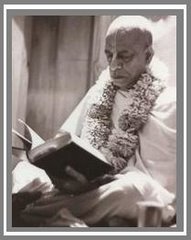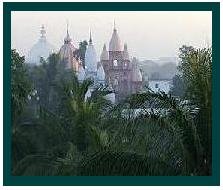
Proper selection of Bows and Arrows
(DhanurVeda)
(DhanurVeda)
A bow which can be drawn by an archer with ease (by his own strength) is considered to be auspicious. The bows of the Gods are heavier and superior to those of the human beings.
A bow measuring five cubits and a half is considered to be the best one and that type is called a ‘divine one’, and that was held by Sankara in ancient days.
Then the bow was taken by Parasurama and from him it came to Drona and then it was received by Partha from Drona, and thereafter it was taken by Satyaki.
During golden age (satyayuga) that divine bow was held by Mahadeva. In the silver age (treta yuga) it was held by Raghava. During the bronze age (dvapara yuga) it was taken by Drona, who was a Brahmana by caste.
The length of a hand is equal to the length of twenty-four fingers of the hand and a bow measures four such hand lengths (caturhasta) and this type is known to be the bow of a human being with all good signs.
A bow may have three, five or seven joints. A bow having nine joints is renowned by the name ‘kodanda,’ which truly is an auspicious one.
A bow having four, six or even eight joints should be discarded. But there are some bows which are more extended in size and are made by a new technique.
A bow should not be used if it is extremely old, or made of unripe materials, or used by one’s kinsmen, or burnt, torn or spoiled inside or outside.
A bow without a string, or a bow in which the string is not suitably fitted, or an arrow with a fault or an arrow in which there are joints on the upper or middle or lower portion should not be used.
A bow made of unripe materials may break up. A bow in a very dilapidated condition loses its smoothness. A bow already used by one’s kinsmen may always be an object of anxiety or dispute among friends and relatives.
A burnt bow causes a house to burn, and a bow having holes always brings defeat and destruction in war. Such a bow does not reach the target, external or internal.
If an inferior type of arrow is fitted to a bow, it may bring defeat in war. Moreover, if such an archer is being attacked, he cannot shoot back effectively.
A joint on the upper portion of a bow or even one on its lower side, causes destruction and loss of wealth. Bows without such defects are considered to be very effective for all types of activities.
The bow of Vishnu is named ‘Sarnga’ and it is considered to be the best weapon. It was a bow, the measurement of which was seven times greater than an ordinary bow which is made by Viswakarma.
That bow remained untouched by anybody in Heaven, in the Nether Region or on Earth. It could only be used by the Supreme personality of Godhead and know one else.
Gradually, over many years, He created and extended a bow which is fit to be used by human beings It measures six and a half vitasti (i.e. the span of the thumb and the middle finger when stretched fully, roughly measuring half a cubit) i.e. total three-and-a-half cubits in length. The bow serves all purposes.
A Sarnga-bow is successfully used by the soldiers on elephant back and the cavalry. For charioteers and foot soldiers, however, a bow made of Bamboo is more useful.
Arrow selection
I shall narrate the auspicious characteristics of Arrows.
Arrows should neither be very heavy nor very fine. They should not be made of unripe materials which are grown on barren land. An arrow with small joints or having splits should be avoided.
The material for an arrow should be selected thus…
The arrow should have matured joints, it should be made with fully ripe materials, the colour of the arrow is to be brownish and gathered at the right time. The material should be hard and round. The tree from which the arrow is to be made should grow on fertile land. [Such an arrow is commendable for the use of a king in battle.]
The size of the arrow should be two cubits less one fist in length and its breadth will be like the little finger. This is the measurement of an arrow which is to be placed on the bow for drawing and discharging towards the target.
The end of an arrow may be fletched with the feathers of crane (kanka), swan (Hamsa), sasada (A variety of bird), fisher bird (matsyada), heron (kraunca), cataka (kinkini), vulture (grdhra) and hen (kukkuta).
Four feathers are to be attached to each arrow. The gap between two feathers should be six fingers.
In the bow (Dhanu) named Sarnga, the gap between two feathers is to be of ten fingers and the four feathers should be firmly tied with hard threads made from intestines.
There are three types of arrows – masculine, feminine, and neuter. Arrows which are flat and heavy in front are designated as ‘feminine, If flat and heavy in its lower portion it is termed as ‘masculine’.
If the top portion and the lowest portion of the arrow is of the same size, it is known as ‘neuter’. Such an arrow is fit for practising (by trainees etc.) The female arrow hits a target at a distance while a male arrow can firmly pierce tough targets.
The characteristics of the tip or arrowhead
The arrowhead should be made of pure iron. It should be sharp and pointed and without any sort of disorder. The head of the arrow should be painted with a coating of ‘diamond’ protective paste according to the proportion of the feathers (vajra means hard as diamond).
The head or tip portion of an arrow may be made of brass and its shape will be like that of a horse-shoe; or it may be like the tail of a cow or it may of the shape of a half-moon. An arrow is called ‘Bhalla’ (i.e. a missile) when its head is as sharp as the tip of a needle, and again it is known as ‘Dvibhallakam’ (.i.e., double missile) when there are two tips like the teeth of a heifer.
The arrowhead may be shaped in different forms according to the existing system of a country, such as ‘Karnikam’ or kakatundam’ etc..
By the arrows (made of brass or purified iron) skin should be pierce; by razor blade arrows, the enemy’s arrows (and his hands) may be severed, and by needle pointed arrows a shield or armour may be pierced, and an arrowhead shaped like half a moon should be used to sever the head of the enemy.
A spear-headed arrow may pierce the chest of the enemy, while a double speared arrow may pierce the string of his bow and counter his (enemy’s) arrows. Arrows made of iron may be countered by the arrows known as ‘Karnika’, and other targets may be pierced by arrows in the shape of the beak of a crow. The type of arrow named ‘Gopuccha’ is used for aiming at (and tearing off) the enemy flag.
If an arrow is made of pure wood it is known by the name ‘gopuccha’ (meaning the tail of a cow). The tip of such an arrow is made of pointed iron measuring three fingers.
The methods of annealing arrowheads
The following divine medicine is to be spread onto the head of the arrow so that it can pierce an unbreakable armour just like a leaf of a tree.
Long pepper (pippali) and sulpher (kustha) and rock-salt (saindhava) should be ground by mixing urine of a cow while pounding, to prepare a paste. That paste should be rubbed on the weapon and then it should be heated on fire.
The paste for annealing should not be very cold. If the arrow fails to pierce anything (i.e. hit the target) or if the arrowhead is one from which the yellow colour has faded, the paste should be applied to the tip and heated thereafter, and then the head of the arrow-head should be dipped in oil to remove the heat to make it especially effective.
Five types of salt should be ground together and that compound is to be soaked in honey and paste of white corn (sveta sasya). The arrowhead is to be covered with such a paste and then heated over a fire.
The arrowhead is to be annealed, and after heating, its colour will be like that of the neck of a peacock, i.e. a yellow colour when hot. Then it should be dipped into clear water for its permanent protection and strength.
Now the two types of rounds viz. Naracas i.e. all iron rounds and Nalika, known as ‘rounds shot from the gun’ (are being described)
Naraca is a round totally made of iron. In some naracas, there are five broad wings and such rounds are always effective (in hitting the targets).
Nalika is a form of round, shot from a weapon like the gun fitted with tube or barrel; it is used while a target is to be hit at a great distance, or in a war taking place in a high fort.
*****************************
Note: I will be the first to admit that this knowledge is not relevant in today's warfare scenarios. In the past it was very useful and in the future when modern societies destroy themselves and civilizations start over again, as they have done so many times in the past , warriors (ksatriyas) will certainly then take advice of the DhanurVeda. It is all very interesting to say the least and one should take note that the Name of Sri Vishnu's Bow (Sarnga) if uttered at the time of death, has the power to liberated the condition soul from the cycle repeated birth and death.
Krishna of Dvaraka also carries Sarnga. Krishna in Vrindaban does not, there he is armed with his flute and peacock feather. -AJD


















